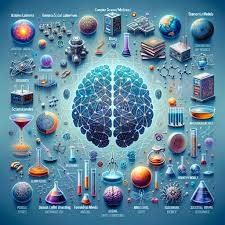Stamp: Diving Beetle Front Foot (United States of America 2023)
Diving Beetle Front Foot (United States of America 2023)
10 August (United States of America ) within release Life Magnified (2023) goes into circulation Stamp Diving Beetle Front Foot face value FOREVER No Face Value
| Stamp Diving Beetle Front Foot in catalogues | |
|---|---|
| Colnect codes: | Col: US 2023.08.10-01i |
Stamp is horizontal format.
Stamp from mini-sheet. Face value US$0.66 on day of issueAlso in the issue Life Magnified (2023):
- Stamp - Acorn Barnacle face value FOREVER;
- Stamp - Arranged Diatoms face value FOREVER;
- Stamp - Barnacle Legs face value FOREVER;
- Stamp - Blue Button Organism face value FOREVER;
- Stamp - Diving Beetle Front Foot face value FOREVER;
- Stamp - Flame Lily Pollen face value FOREVER;
- Stamp - Freshwater Protozoans face value FOREVER;
- Stamp - Freshwater Snail Tongue face value FOREVER;
- Stamp - Human Hair face value FOREVER;
- Mini Sheet - Life Magnified face value 20*FOREVER;
- Stamp - Macaw Parrot Feathers face value FOREVER;
- Stamp - Mold Spores face value FOREVER;
- Stamp - Moss Leaves face value FOREVER;
- Stamp - Moth Antenna face value FOREVER;
- Stamp - Moth Wing Scales face value FOREVER;
- Stamp - Mouse Brain Neurons face value FOREVER;
- Stamp - Mushroom Gills face value FOREVER;
- Stamp - Oak Leaf Surface face value FOREVER;
- Stamp - Red Blood Cells face value FOREVER;
- Stamp - Starling Bone Tissue face value FOREVER;
- Stamp - Zebrafish face value FOREVER;
- Full Pane - Life Magnified Imperf face value None;
Stamp Diving Beetle Front Foot it reflects the thematic directions:
Animals are multicellular, eukaryotic organisms of the kingdom Animalia (also called Metazoa). All animals are motile, meaning they can move spontaneously and independently, at some point in their lives. Their body plan eventually becomes fixed as they develop, although some undergo a process of metamorphosis later on in their lives. All animals are heterotrophs: they must ingest other organisms or their products for sustenance.
Beetles are insects that form the order Coleoptera (/koʊliːˈɒptərə/), in the superorder Holometabola. Their front pair of wings are hardened into wing-cases, elytra, distinguishing them from most other insects. The Coleoptera, with about 400,000 described species, is the largest of all orders, constituting almost 40% of described insects and 25% of all known animal species; new species are discovered frequently, with estimates suggesting that there are between 0.9 and 2.1 million total species. Found in almost every habitat except the sea and the polar regions, they interact with their ecosystems in several ways: beetles often feed on plants and fungi, break down animal and plant debris, and eat other invertebrates. Some species are serious agricultural pests, such as the Colorado potato beetle, while others such as Coccinellidae (ladybirds or ladybugs) eat aphids, scale insects, thrips, and other plant-sucking insects that damage crops. Some others also have unique characteristics, such as the common eastern firefly, which uses a light-emitting organ for mating and communication purposes
Insects (from Latin insectum, a calque of Greek ἔντομον [éntomon], "cut into sections") are a class (Insecta) of hexapod invertebrates within the arthropod phylum that have a chitinous exoskeleton, a three-part body (head, thorax and abdomen), three pairs of jointed legs, compound eyes and one pair of antennae. They are the most diverse group of animals on the planet, including more than a million described species and representing more than half of all known living organisms. The number of extant species is estimated at between six and ten million, and potentially represent over 90% of the differing animal life forms on Earth. Insects may be found in nearly all environments, although only a small number of species reside in the oceans, a habitat dominated by another arthropod group, crustaceans. The life cycles of insects vary but most hatch from eggs. Insect growth is constrained by the inelastic exoskeleton and development involves a series of molts. The immature stages can differ from the adults in structure, habit and habitat, and can include a passive pupal stage in those groups that undergo 4-stage metamorphosis (see holometabolism). Insects that undergo 3-stage metamorphosis lack a pupal stage and adults develop through a series of nymphal stages. The higher level relationship of the Hexapoda is unclear. Fossilized insects of enormous size have been found from the Paleozoic Era, including giant dragonflies with wingspans of 55 to 70 cm (22–28 in). The most diverse insect groups appear to have coevolved with flowerin plants.
Science is a systematic discipline that builds and organises knowledge in the form of testable hypotheses and predictions about the universe.Modern science is typically divided into two or three major branches: the natural sciences (e.g., physics, chemistry, and biology), which study the physical world; and the behavioural sciences (e.g., economics, psychology, and sociology), which study individuals and societies.The formal sciences (e.g., logic, mathematics, and theoretical computer science), which study formal systems governed by axioms and rules, are sometimes described as being sciences as well; however, they are often regarded as a separate field because they rely on deductive reasoning instead of the scientific method or empirical evidence as their main methodology. Applied sciences are disciplines that use scientific knowledge for practical purposes, such as engineering and medicine




